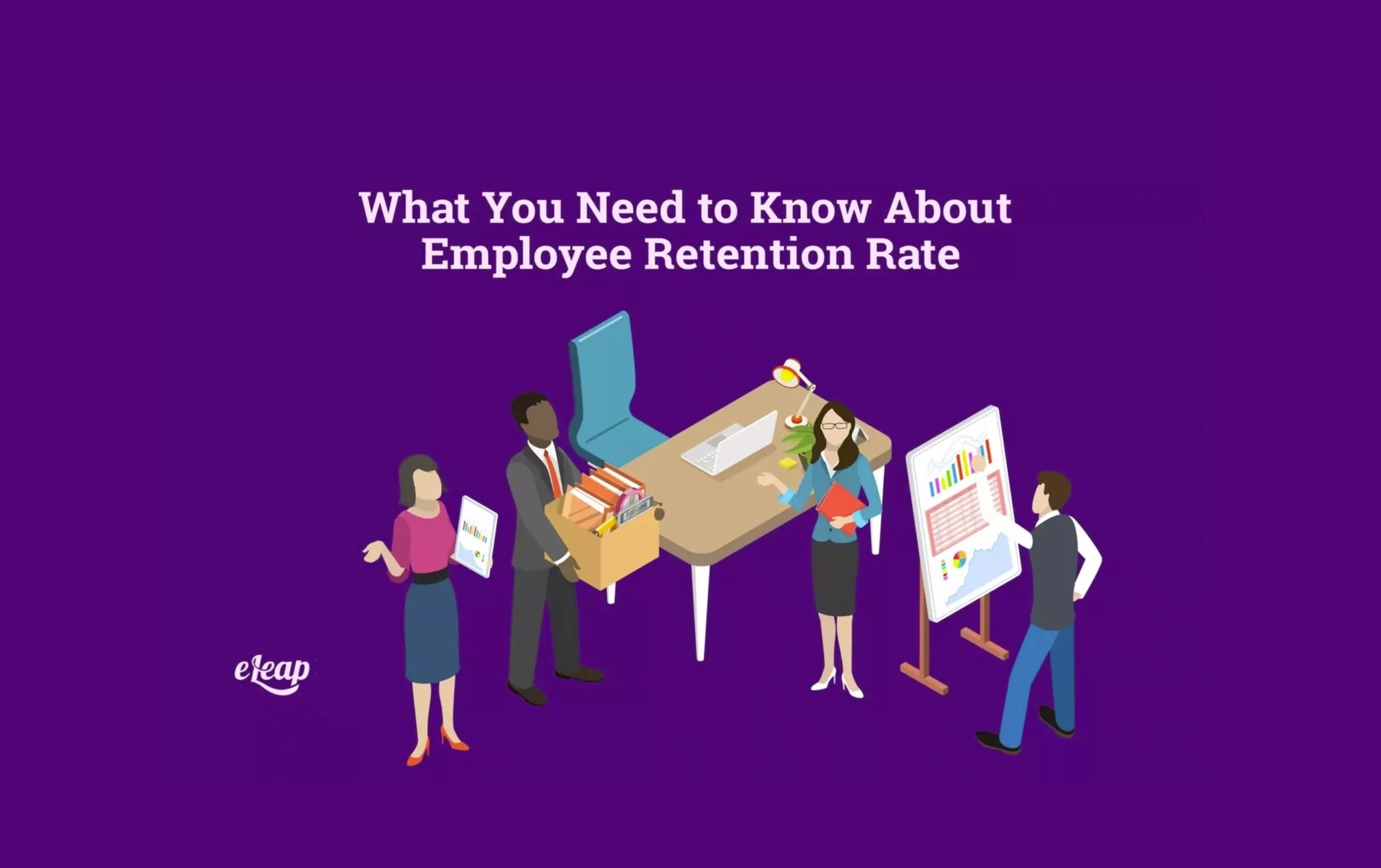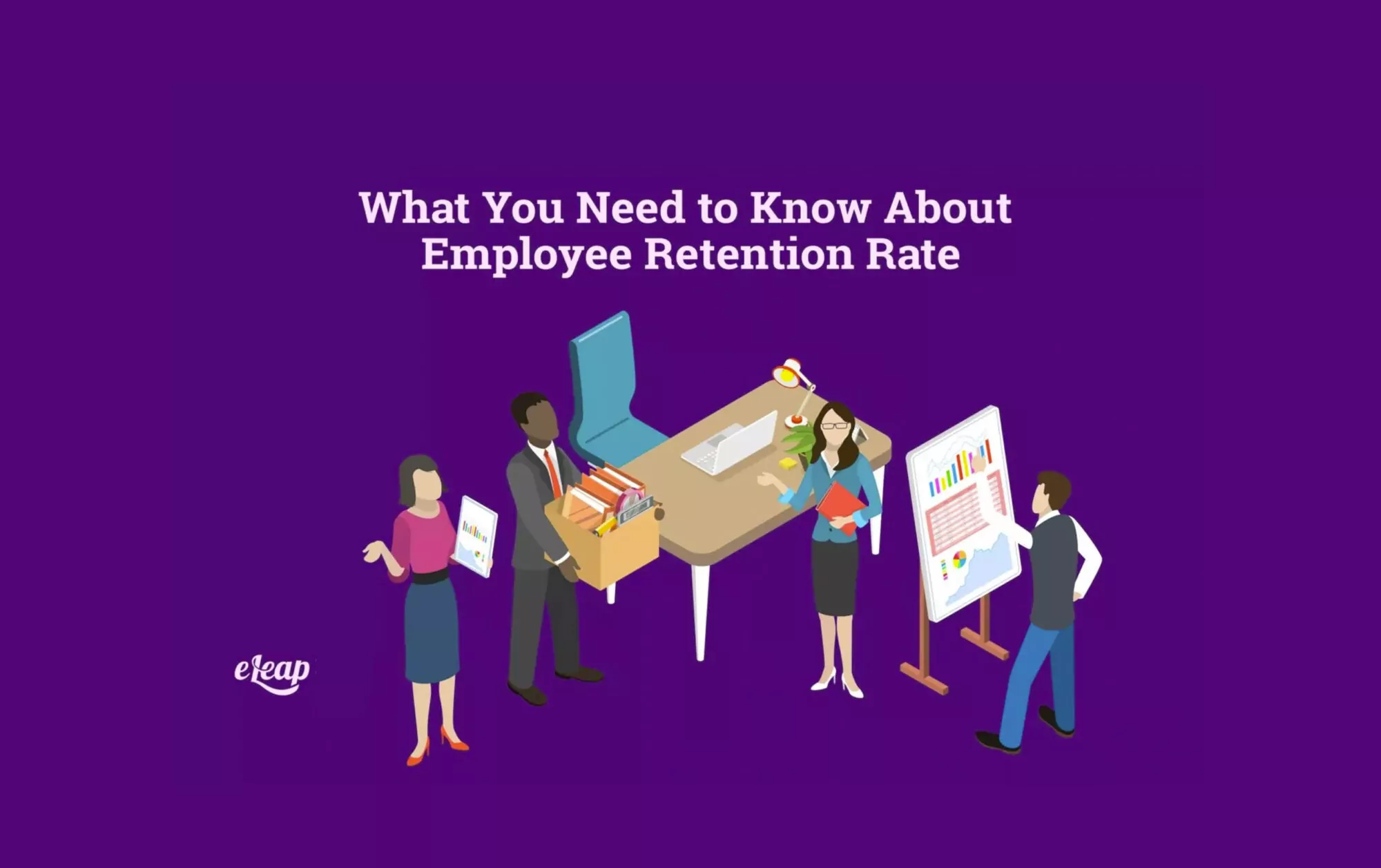What You Need to Know About Employee Retention Rate

Your employees are the backbone of your business, and your employee retention rate helps you see how well they are doing. A big part of that success is making sure that your employees stay committed to their positions and the company as a whole. Keeping employees around for an extended period is what keeps your employee retention rate high.

To get your employee retention rate under control, you first have to understand what it is and why it matters. Then, you can learn how to calculate your company’s retention rate and see if it needs improvement. While it can be intimidating to consider employee retention rate, it’s a simple process once you understand it!
What Is Employee Retention Rate?
Your employee retention is the exact opposite of your employee turnover. Your turnover rate is the number of employees who leave in any particular period, expressed through a percentage. Thus, your employee retention rate is the number of employees who stayed during that same period.
Why Does Employee Retention Rate Matter?
Keeping your employees around for an extended amount of time benefits your company in many ways. Focusing on retention can help show your employees the company cares and wants them to succeed. This can lead to your employees performing better, which can give you better success as a company.
Plus, having a high retention rate helps you avoid the cost of constantly hiring new employees, which includes onboarding, training, and other costs.
Maintaining experienced employees means that you will have higher productivity than you would with a constant revolving door of trainees.
When your retention rate is consistent, you don’t have to worry about hiring. Thus, you can focus on other elements like growth, coaching, and profits. Of course, in order to know that your employee retention rate is where it needs to be, you have to know how to calculate it.
How to Figure Out Your Employee Retention Rate
The first thing to decide when calculating your employee retention rate is what period of time you want to look at. You can analyze the retention rate annually, but that can cause you to miss important trends and factors until after they’ve already occurred.
Instead, consider calculating your employee retention rate on a regular basis. Determining the rate monthly can help you see factors and trends before they become an issue. It can also show
Plus, knowing your monthly rate can help you catch a lowering retention rate before it becomes a problem.
After you’ve determined the period you want to analyze, you need to figure out the number of employees you had on the first day of the period and how many stayed until the last day of the period. It’s important to note that you wouldn’t factor in anyone you hired during that period so that they don’t skew the numbers.
With these numbers, you would divide the number of people who stayed until the end of the period by the number of employees you started the period with. Take the result of this calculation and multiply it by 100 to get your employee retention rate!
Let’s look at an example. Let’s say you want to know what your employee retention rate was for March. You would first look at how many employees you had on March 1st. When you pull that report, you see you had 40 employees. Then, you would look at March 31st and see how many of those 40 employees were still there. You look at this report and see that 37 of them stayed. You would divide 37 by 40, giving you 0.925. Multiply this result by 100, and you get your employee retention rate for March: 92.5%.
Tips on Improving Your Employee Retention Rate
Now you know how to calculate your employee retention rate! But what happens if you calculate it and don’t like the number you get? If this happens, your next step is making changes to raise your retention rate!
Fortunately, there are some proven ways to help boost your employee retention rate and then keep it high after you get it where you want it to be!
Hire Qualified People
The first thing you have to do for a high employee retention rate is to hire the right people for the job. When you need to hire for a position, make sure you clearly understand the role and the responsibilities that come along with it. Take the time to consider what you need in a perfect fit for the position, and don’t settle for less.
When you’re interviewing people for the position, take time to get to know them and their work history to get a true feel for whether they’re a good fit. Not only do you need to consider whether they have the skill set needed, but you need to make sure they would be a good fit with the team you already have. Compatibility in the workplace is crucial for teamwork and overall retention.
When you take the time to hire the right people from the beginning, you’re much more likely to have employees stick around. When employees feel like they fit in their position, they’ll be happier for much longer!
Invest in Your Management Team
One of the major elements of a job that can make or break your employee retention rate is the management team you hire. An employee’s immediate manager has the most influence on their experience at work. This includes their morale, motivation, and success, which often rely on how their management treats them and their team as a whole.
Hiring managers who help your employees grow in their position and who truly respect them is one of the easiest ways to retain employees. If you have a manager who micromanages, it can hinder the growth and potential of your employees.
Make sure your management team is getting thorough training for both their job role and their management skills. Having the right skill set to monitor, train, and supervise their team is a great way to make sure they are helping to improve employee retention rate.
Pay Well
Truthfully, you can do everything right when it comes to culture, feedback, and incentives, but employees will still leave if they aren’t being compensated well.
Employees will stay when they feel they’re being compensated fairly, and they know when they can work elsewhere in the same type of job for more money.
It’s crucial to offer compensation that is at or above the market average for where you’re located. If you must pay below the market average, you need to be able to support your reason for doing so in a way that won’t make employees seek out another job.
Show Appreciation
Making sure your employees are paid well is crucial, but it isn’t the only thing that you need to do. Most employees quit a job because they don’t feel appreciated, or they aren’t given enough support to grow in the company.
Employees will be much more likely to stay if they feel like their company is investing in them and their career goals. In order to do this, it’s imperative that you take time to talk to your employees, get to know them, and get their feedback on how things are going.
When you get to know your employees and their personal goals, this can help you support and give them the training they need to achieve those goals. When you let your employees give you feedback on how their daily work life is going, you can see what problems are causing people to leave.
Learning what the true issues are for your employees can help you to make corrections by changing policies, management, or offering bonus incentives to your employees. Combine competitive pay with increased appreciation, your employee retention rate will improve!
Takeaway
Keeping your employees happy is crucial for having a high retention rate and a successful company. The longer employees stick around, the better they know the ins and outs of the company and the more successful they can become in their positions. When you nurture their potential and give them the tools to succeed, along with competitive wages, they won’t have reason to go anywhere else!
When you have a high employee retention rate, you can focus on other elements of your company instead of constantly focusing on hiring. Through these perks, the employee retention rate can help the overall success of your company! The eLeaP continuous performance management system provides organizations with powerful options to attract and retain high caliber team members.